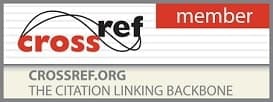- Printed Journal
- Indexed Journal
- Refereed Journal
- Peer Reviewed Journal
P-ISSN: 2394-1685 | E-ISSN: 2394-1693 | CODEN: IJPEJB
Impact Factor (RJIF): 5.38
2019, Vol. 6, Issue 5, Part C
Comparison of heart rate during the specific load and training match in boxing
Author(s): Peter Krška, Andrej Hubinák, Ľuboslav Šiška and Monika Czáková
Abstract:
The aim of the work was to identify the immediate effect of the specific training load and training match measured in boxing in terms of heart rate in order to assess the validity of the designed load as an appropriate training tool. Our research group consisted of 45 probands divided into three groups of 15. The average age of the women group was 21.7 ± 1.8 years, body weight 62.1 ± 7.5 kilograms and body height 169.60 ± 7.17 centimeters. In group of men the average age was 22.27 years ± 1.49, body weight 74.93 kg ± 9.88 and body height 180.87 cm ± 8.21. In a group of boxers was the average age 19.07 ± 2.52 years, body weight 71.47 ± 13 and body height 179.93 ± 8.19 cm. We monitored the heart rate measured by SUUNTO. The designed specific load was conceived as the conditioning equivalent to boxing match of 3x3 minutes and it consisted of repeated performing the strength-speed sequences which are the combinations of push-ups and maximal effort movement in approximate duration 5 seconds. The data were evaluated by the descriptive statistics, compared by analysis of variance two-factored with replication. The validity of load was reviewed by ICC correlation coefficient. The specific load produced the immediate statistically significant effect of increasing the average heart frequency in the individual rounds p<0.01, where boxers reached the highest values p<0.01. The training match caused similar immediate effect as the specific load with the increasing heart rate frequency between the rounds p<0.01. In the case of heart rate the immediate effect of training match and specific load was statistically significant and similar on 80.6% The results pointed to the increasing heart frequency. The validity of our designed specific load as the appropriate training tool has been proven. Results of this work contribute to the training quality improving and for improving the performance of boxers.
Pages: 142-145 | 829 Views 164 Downloads
Download Full Article: Click Here
How to cite this article:
Peter Krška, Andrej Hubinák, Ľuboslav Šiška, Monika Czáková. Comparison of heart rate during the specific load and training match in boxing. Int J Phys Educ Sports Health 2019;6(5):142-145.








 Research Journals
Research Journals